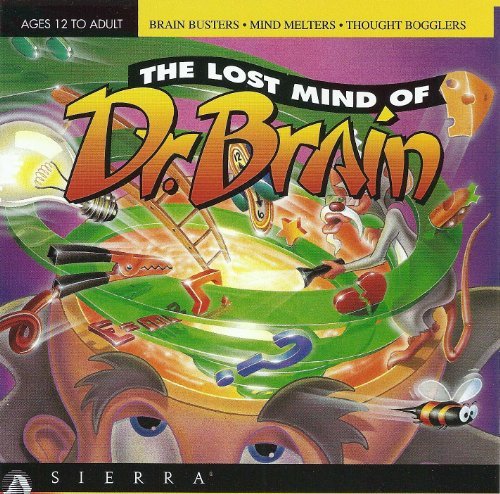The Lost Mind of Dr. Brain
This post contains affiliate links. As an Amazon Associate I earn from qualifying purchases This game, the third in the Dr. Brain series, begins with an explanation of the goal of the game — Dr Brain’s brain has been accidentally transferred into a lab rat and you need to restore it. To do this you
This post contains affiliate links. As an Amazon Associate I earn from qualifying purchases
This game, the third in the Dr. Brain series, begins with an explanation of the goal of the game — Dr Brain’s brain has been accidentally transferred into a lab rat and you need to restore it. To do this you must complete nine puzzle areas. (There are 3 levels of difficulty, which restore 5%, 10%, or 15% of a section of Dr. Brain’s brain.) The puzzles are designed to require “the combined efforts of your seven intelligences,” as detailed by Dr. Howard Garnder’s Theory of Multiple Intelligences: verbal/linguistic, logical/mathematical, visual/spatial, bodily/kinesthetic, musical, interpersonal, and intra-personal. While one activity requires mainly hand eye coordination, others involve more complex mathematical thinking and problem solving. For instance, players must navigate a three-dimensional maze using a two dimensional map, use a set of basic computer commands to direct a robot around a grid, build a replica of a 3-D block construction using a model which can be rotated, flip the switches on a system of train tracks in order to deliver requested marbles in the correct sequence, and develop a system for filing objects in order to recall which objects were placed where. Other puzzles involve moving letters around a grid to form words, placing and matching pictures of sign language letters in a grid, and rearranging eight bars of music to play a requested song. Once Dr. Brain’s brain is restored, the player visits Dream Land and solves a final series of puzzles.
This post contains affiliate links. As an Amazon Associate I earn from qualifying purchases








